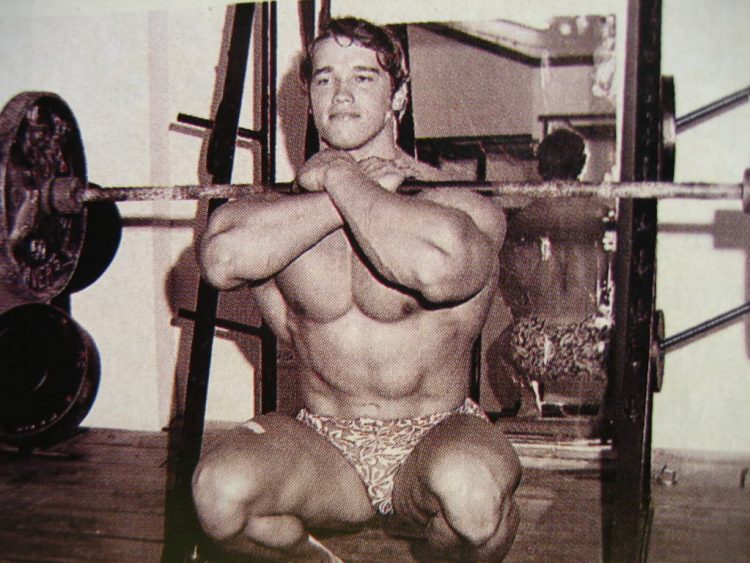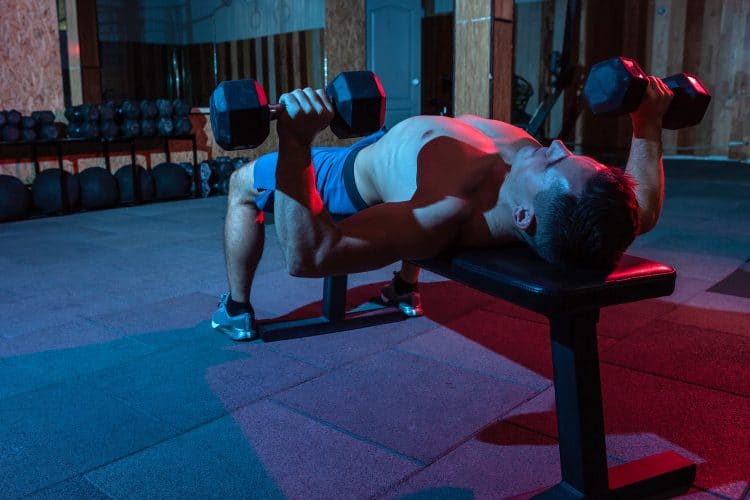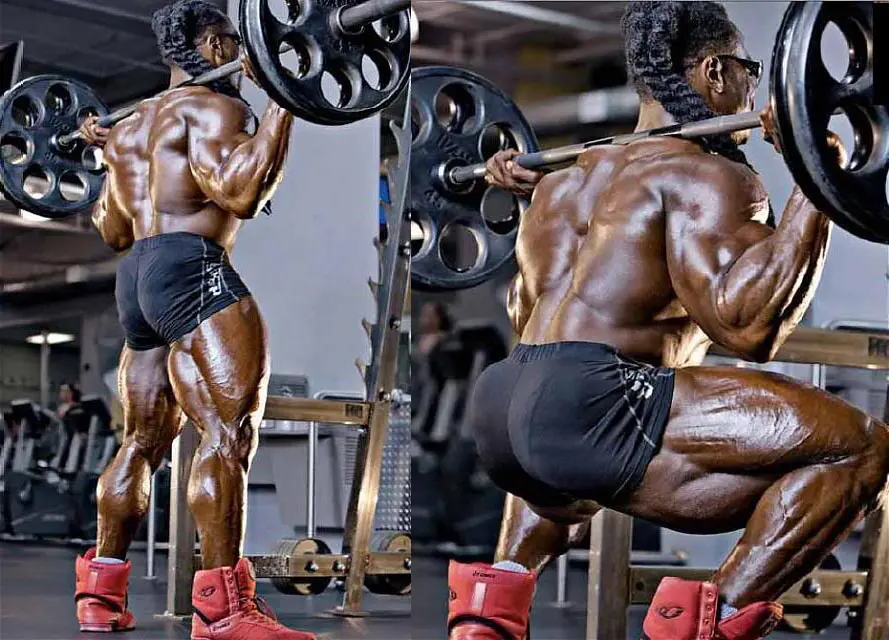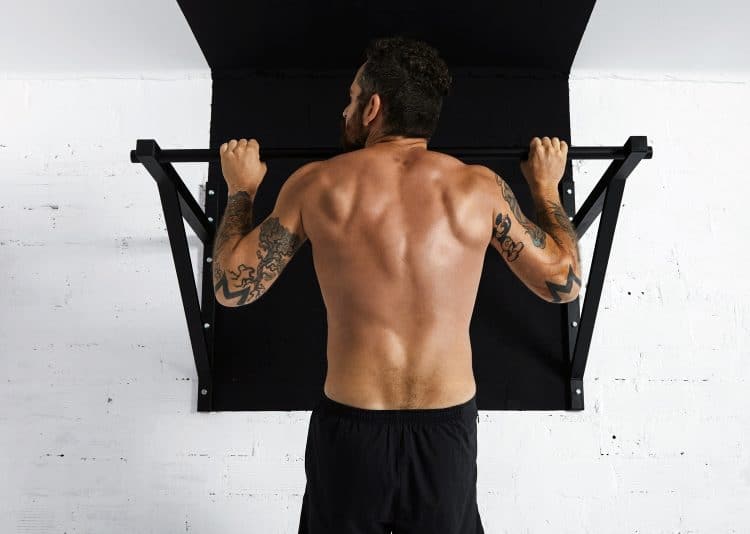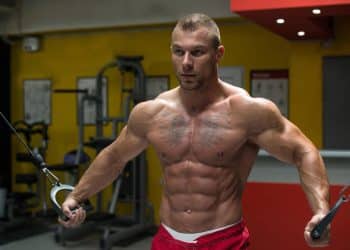Life is all about balance – work vs. leisure, money earned vs. money spent, food intake vs. energy expenditure, stress vs. relaxation, training vs. recovery…the list is almost endless.
Your workouts should be no different. Ideally, there should be an even balance between major muscles if you want to build an aesthetically pleasing physique while keeping your joints healthy and your body functioning correctly.
In this article, we’ll provide you with two workouts that do all the balancing for you and ensure that you end up not just looking good but feeling good too!
Agonist/Antagonist Muscle Pairings
The skeletal muscles are generally found in pairs on opposing sides of joints and tend to be responsible for opposite actions. For example, the bicep brachii at the front of the upper arm flexes the elbow while the triceps brachii at the rear of the upper arm extends the same joint.
Should one of these muscles become stronger than its opposing partner (called the agonist/antagonist relationship), the joint may become unbalanced. While an unbalanced elbow is probably not much of a problem, an unbalanced knee or shoulder joint can cause severe joint dysfunction and pain and is best avoided.
For example, should the quadriceps at the front of the thigh become significantly stronger than the hamstrings at the rear of the thigh, it’s possible that the knee will be adversely affected, and there is an increased risk of chronic knee pain.
Level Up Your Fitness: Join our 💪 strong community in Fitness Volt Newsletter. Get daily inspiration, expert-backed workouts, nutrition tips, the latest in strength sports, and the support you need to reach your goals. Subscribe for free!
Likewise, if the pectoralis major of the chest is better developed or stronger than the opposing rhomboids and middle trapezius of the upper back, then poor posture and shoulder pain could be the result.
The main agonist/antagonist pairings and their location are:
- Biceps & triceps (front and back of upper arm)
- Anterior & posterior deltoids (front and back of shoulder joint)
- Pectoralis major & mid traps/rhomboids (front and back of upper torso)
- Latissimus dorsi & medial deltoids (lower and upper shoulder joint)
- Rectus abdominus & erector spinae (front and back of the abdomen)
- Quadriceps & hamstrings (front and back of thigh)
- Hip flexors & gluteus maximus (front and back of hip)
- Adductors & abductors (inside and outside of thigh)
- Tibialis anterior & gastrocnemius/soleus (front and back of shin)
(note that some pairings are based on anatomical location while others are based on opposing functions)
Training both muscles in each pair will ensure they’re both equally well developed. This will not only enhance function and improve posture, but it should also lead to a better-looking physique. Imbalances where one paired muscle is noticeably larger than the other can really hurt your appearance.

While there is nothing to say that paired muscles must be trained at the same time, doing so ensures that your workouts are as balanced as they can be. One simple yet effective way to do this agonist/antagonist supersets.
Supersets involve doing paired exercises back-to-back. There are several different types of supersets, but agonist/antagonist or push/pull supersets are amongst the best.
As well as ensuring paired muscles are trained equally, this type of superset is also very time-efficient, as you will spend less of your workout resting. They also speed up recovery, so you can train harder than usual. In addition, going back and forth between paired exercises should also deliver a great pump.
While you should be able to create your own agonist/antagonist supersets from the list of pairings above, we’ve saved you the bother by producing two example programs for you to try – one full-body workout and one three-way split.
Full-Body Balanced Superset Workout
This superset workout is designed to be done 2-3 times a week on non-constitutive days, e.g., Monday, Wednesday, Friday, or Monday and Thursday. This is a good workout for beginners and anyone who simply prefers full-body workouts.
[Related: Full-Body Vs. Split Routines – How to Choose]
Before you begin this or any other workout, make sure you spend a few minutes warming up and preparing your body and mind for what you’re about to do. Begin with 5-10 minutes of light cardio, and then do some dynamic mobility and flexibility exercises for your main joints and muscles.
To do the supersets in this workout, do the first exercise (1a) and then, without resting, do the second exercise (1b). Rest for the prescribed time and then repeat the pairing 2-3 more times. On completion, move on to the next superset (2a and 2B) and do the same thing again.
Full-Body Balanced Superset Workout
| # | Exercise | Sets | Reps | Recovery |
| 1a | Front squat | 2-4 | 8-15 | 60-90 seconds |
| 1b | Leg curl | |||
| 2a | Bench press | 2-4 | 8-15 | 60-90 seconds |
| 2b | Wide grip seated row | |||
| 3a | Romanian deadlift | 2-4 | 8-15 | 60-90 seconds |
| 3b | Leg extension | |||
| 4a | Dumbbell shoulder press | 2-4 | 8-15 | 60-90 seconds |
| 4b | Lat pulldown | |||
| 5a | Cable biceps curl | 2-4 | 8-15 | 60-90 seconds |
| 5b | Cable triceps pushdown | |||
| 6a | Stability ball crunch | 2-4 | 8-15 | 60-90 seconds |
| 6b | Stability ball back extension |
3-Way Split Balanced Superset Workout
While there is nothing wrong with full-body workouts – for all levels of fitness and experience – a lot of lifters prefer split routines. The main advantage of split routines over full-body workouts is you have more time and energy to work each muscle group longer and harder. This means that split routines are ideal for bodybuilders.
That said, a lot of bodybuilding workouts are very unbalanced, often overemphasizing the muscles on the front of the body. Using agonist/antagonist supersets is one way to avoid this problem.
This workout involves three workouts per week. As always, precede each one with a thorough warm-up.
Level Up Your Fitness: Join our 💪 strong community in Fitness Volt Newsletter. Get daily inspiration, expert-backed workouts, nutrition tips, the latest in strength sports, and the support you need to reach your goals. Subscribe for free!
As you’ll be training different muscles, you can arrange your training week in whatever way is convenient. However, try to separate the upper body workouts by a couple of days to provide enough time for rest and recovery.
Horizontal Push/Pull & Arms Balanced Superset Workout
| # | Exercise | Sets | Reps | Recovery |
| 1a | Dumbbell bench press | 3-5 | 6-12 | 60-90 seconds |
| 1b | Wide grip Pendlay row | |||
| 2a | Incline dumbbell flyes | 3-5 | 6-12 | 60-90 seconds |
| 2b | Incline chest-supported row | |||
| 3a | Deficit push-ups | 3-5 | 6-12 | 60-90 seconds |
| 3b | Single-arm dumbbell row | |||
| 4a | EZ bar preacher curl | 3-5 | 6-12 | 60-90 seconds |
| 4b | EZ bar skull crushers |
Legs and Abs Workout Balanced Superset Workout
| # | Exercise | Sets | Reps | Recovery |
| 1a | Squat | 3-5 | 6-12 | 60-90 seconds |
| 1b | Leg curl | |||
| 2a | Deficit deadlift | 3-5 | 6-12 | 60-90 seconds |
| 2b | Sissy squat | |||
| 3a | Bulgarian split squat | 3-5 | 6-12 | 60-90 seconds |
| 3b | Hip thrust | |||
| 4a | Rollout | 3-5 | 6-12 | 60-90 seconds |
| 4b | 45-degree back extension |
Vertical Push/Pull & Arms Balanced Superset Workout
| # | Exercise | Sets | Reps | Recovery |
| 1a | Chin-up/pull-up | 3-5 | 6-12 | 60-90 seconds |
| 1b | Barbell military press | |||
| 2a | Wide grip lat pulldown | 3-5 | 6-12 | 60-90 seconds |
| 2b | Machine shoulder press | |||
| 3a | Neutral grip lat pulldown | 3-5 | 6-12 | 60-90 seconds |
| 3b | Dumbbell lateral raise | |||
| 4a | Alternating dumbbell curl | 3-5 | 6-12 | 60-90 seconds |
| 4b | Dumbbell overhead triceps extension |
Fixing Muscle Imbalances
Balanced supersets will help prevent imbalances, but not be sufficient to fix existing problems. For example, if you’ve been focusing a little too much on your mirror muscles, you could already have imbalances between the muscles on the front of your body and those on the back.
Ignoring the problem won’t make it go away, and nor will doing the same number of sets for both of the muscles that make up the agonist/antagonist pairings. Instead, you need to spend some extra time on the muscles you need to bring up while maintaining the other paired muscle.
One of the best ways to do this is to adopt a 3:1 ratio in favor of the weaker muscle group.
If, for example, you had a muscular imbalance where your quadriceps were significantly better developed than the hamstrings, you would perform three sets of hamstring work for every set of quads.
This, over time, would rectify the imbalance while maintaining the condition of the stronger muscle group. The weaker muscle would literally get a chance to “catch up.”
It is also possible to use the balanced superset approach to repair muscle imbalances, but by modifying it slightly as outlined below. In this example, our lifter has an overdeveloped chest/underdeveloped upper back.
1a. Bench press x 6-12 reps
1b. Wide grip bent over row x 6-12 reps
1a. Chest stretch x 30-60 seconds
1b. Wide grip bent over row x 6-12 reps
1a. Chest stretch x 30-60 seconds
1b. Wide grip bent over row x 6-12 reps
Regardless, if you have a muscle imbalance, you need to train the weak muscle more and the stronger muscle less to restore balance quickly. If you continue training both muscles equally, the weaker muscle will always lag behind the stronger one.
More Supersets:
- Five Supersets for Explosive Strength and Power
- Supersets For Bigger, Stronger Biceps and Triceps
- Burn Fat Faster with Lower Body/Upper Body Supersets + Workout
- Bodybuilding Coach Charles Glass Shares A ‘Must Try’ Back Superset
- Get More From Your Workouts with Supersets
- Chest And Back Training: Try Arnold’s Superset For Superior Results
- These Supersets Will Take Your Strength Training To The Next Level
Wrapping Up
Supersets are a very versatile training method. They’re helpful for building muscle and making better use of your training time. You can also use them to prevent and address muscle imbalances.
While muscle imbalances are never terminal, they can still have a significant impact on how you look, feel, and perform.
For example, a lot of lifters have overdeveloped chests and anterior deltoids and underdeveloped upper backs and posterior deltoids. Adopting the balanced superset method could help prevent these problems.
So, try the agonist/antagonist superset method for yourself or take our balanced superset workout for a spin. Push-pull supersets are arguably the easiest way to avoid muscle imbalances.

